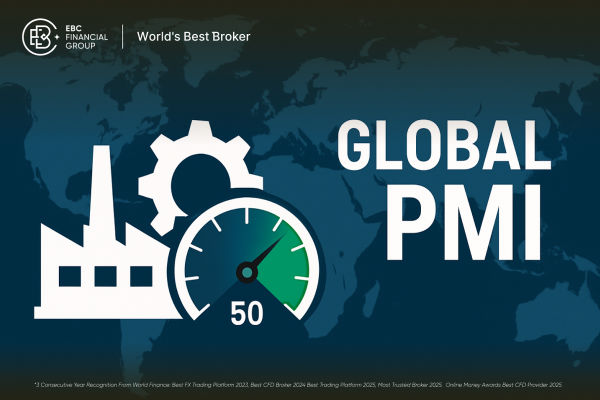Investing is the most effective way to make your money work for you over time. While saving simply preserves capital, investing can grow your wealth by generating returns above inflation.
In this guide, we will explore how to define your goals, choose the right investment vehicles, manage risks, and scale your portfolio for long-term success.
Clarifying Your Investing Objectives

Before you invest, it is crucial to clarify what you are trying to achieve. Here are some key steps:
Define Your Investment Goals:
Are you investing for a house deposit (short-term), retirement (long-term), or perhaps funding your children's education (mid-term)?
Assess Your Risk Tolerance and Time Horizon:
Understanding how much risk you are comfortable with will influence your asset allocation. A longer time horizon often allows for more volatility.
Establish an Emergency Fund:
Before you lock money into investments, set aside a cash reserve, typically three to six months of living expenses, so you can handle unexpected costs without pulling out of your investments.
Building a Strong Investment Foundation
Investing without a stable financial base can lead to unnecessary stress and risk. This foundation includes:
Budgeting and Cash‑Flow Management:
Track your income and expenses to ensure you are living within your means and have surplus to invest.
Reducing High‑Interest Debt:
Debts such as credit cards often carry very high interest rates, so paying these down first is often more beneficial than investing.
Understanding the Time Value of Money:
A pound invested today is worth more in the future. The earlier you begin investing, the more you can benefit from compounding.
Choosing the Right Investment Vehicles to Make Money

To grow your wealth, you need to select the most suitable investment instruments. Here are common types:
Equities (Stocks):
Investing in individual companies for capital appreciation or dividend income.
Fixed Income (Bonds):
Loans to governments or corporations that pay regular interest, providing stability and a predictable source of income.
Funds:
Mutual Funds: Professionally managed pools of investments.
Exchange‑Traded Funds (ETFs): Traded like stocks but contain diversified holdings.
Index Funds: Low-cost funds that track a market index.
Alternative Assets:
These may include real estate, commodities, or peer-to-peer lending.
Passive Income Assets:
Such as dividend-paying stocks, rental properties, or income-generating fund shares.
Strategic Investment Methods That Work
To maximise returns and manage risk, certain strategies can help:
Dollar‑Cost Averaging (DCA):
Investing a fixed amount at regular intervals, regardless of market conditions.
Value Averaging:
Increasing or decreasing the investment amount to target a set growth path.
Lump‑Sum Investing:
Investing a large sum at once; this can be effective if market conditions are favourable.
Asset Allocation and Diversification:
Spreading investments across different asset classes to manage risk.
Rebalancing:
Periodically readjusting your portfolio to maintain your target allocation.
Managing Investing Risk and Avoiding Common Mistakes
Investment risk is inevitable, but you can mitigate it by:
Diversifying:
Avoid putting all your capital into a single asset or sector.
Sticking to Your Plan:
Do not let emotions like fear or greed dictate your decisions.
Minimising Fees and Taxes:
High management fees or poor tax planning can seriously reduce net returns.
Understanding Your Exit Strategy:
Know when and why you might sell investments, depending on your goals and timeline.
Maximising Investment Returns through Advanced Techniques

Once you have the basics in place, you can consider more advanced approaches:
Growth vs Value Investing:
Growth investing focuses on companies with high potential, while value investing targets undervalued firms.
Dividend Reinvestment Plans (DRIPs):
Automatically reinvesting your dividends to compound your returns.
Tax‑Efficient Investing:
Utilising tax-advantaged accounts, harvesting losses, or timing disposals.
Building Passive Income Streams:
Over time, assets such as high-yielding funds or property can generate ongoing cash flow.
Hybrid Approaches:
Combining active investing (e.g., stock picking) with passive strategies (e.g., ETF investing).
Building and Monitoring Your Investment Portfolio
Putting together a robust portfolio requires careful planning and ongoing oversight:
Choosing a Brokerage or Platform:
Select one with a good reputation, low fees, and user-friendly interface.
Setting Up Regular Contributions:
Automate your investments to ensure consistency.
Tracking Performance:
Monitor key metrics such as return, volatility, and drawdowns.
When to Rebalance:
Decide on a schedule (e.g. annually or semi-annually) to restore your portfolio's target allocation.
Scaling Your Investments Over Time
As your financial situation evolves, your investing approach can grow:
Increasing Contributions:
Gradually allocate more of your income to investments as you earn more.
Expanding into New Asset Classes:
Add real estate, alternative investments, or international exposure.
Using Leverage (Carefully):
For experienced investors, borrowing to invest, such as using margin or property debt, can magnify returns while also increasing risk.
Continuous Learning:
Stay informed about economics, markets, and new financial products.
Mindset and Psychology to Make Money Last

Investing is not only technical; psychology plays a major role:
Recognise Biases:
Be aware of common cognitive biases, such as overconfidence, loss aversion, and herding behaviour.
Be Patient:
The most successful investors often adopt a long-term mindset.
Develop Healthy Habits:
Treat investing like a regular habit rather than a speculative gamble.
Learn from Mistakes:
Reflect on your choices, iterate your strategy, and adapt as you go.
Frequently Asked Questions
Q1: How much money do I actually need to start investing?
You can begin investing with very small amounts because many platforms allow low minimum contributions. The key is consistency rather than size. Regular contributions, even if modest, help build long term discipline and benefit from compounding.
Q2: Is investing safe, or will I likely lose money?
All investing involves some level of risk, particularly over short periods. However, risks become more manageable with diversification, a clear plan, and a long investment horizon. Historically, diversified portfolios tend to recover and grow over extended periods.
Q3: Should I pick individual stocks or invest via funds?
Individual stocks may offer higher potential returns but require research and greater risk tolerance. Funds such as index funds and ETFs provide instant diversification, lower costs, and fewer decisions, which often makes them more suitable for most investors.
Q4: How do I know when to rebalance my portfolio?
Rebalancing becomes necessary when your portfolio drifts significantly from your target allocation. Many investors rebalance annually or semi annually, while others prefer threshold based adjustments. The aim is to maintain your chosen risk and return profile.
Q5: How can I minimise the impact of taxes on investment returns?
Tax efficiency can be improved by using tax advantaged accounts, reinvesting dividends smartly, and timing the sale of assets. Understanding your tax rules and planning disposals carefully helps preserve more of your long term investment gains.
Conclusion
Investing to make money requires a thoughtful, disciplined approach. By clarifying your goals, choosing suitable assets, managing risk, and adopting long-term strategies, you can build a portfolio that generates growth and passive income.
Equally important is maintaining a healthy mindset, staying disciplined during market fluctuations, and continually educating yourself. Over time, the compounding power of your investments can help transform modest contributions into meaningful wealth.
Disclaimer: This material is for general information purposes only and is not intended as (and should not be considered to be) financial, investment or other advice on which reliance should be placed. No opinion given in the material constitutes a recommendation by EBC or the author that any particular investment, security, transaction or investment strategy is suitable for any specific person.

























